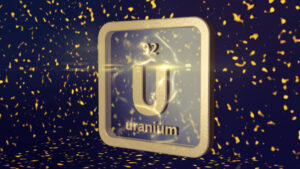Backing Winners: Core Energy’s strategy to mirror winning model of Latin Resources

Pic: Getty Images
Backing Winners is Stockhead’s regular recap of executives with a solid track record looking to replicate the success of their previous roles.
Today we hear from Anthony Greenaway, executive director at Core Energy Minerals and previous VP operations at Latin Resources.
Can you tell us about some of the key learnings you’ve taken away from your time at Latin, in particular the major factors that led to its success and eventual takeover?
There are three points that stand out in my mind about what Latin Resources did when we came to Brazil that guided our success.
I’m a geologist by training and underlining any project that we get into is that the geological fundamentals must be sound.
Before we acquire the project, we investigate the area that we want to be in on the basis of ‘is this area prospective, do we understand the controls for geology’, which is a very technical-based entry.
We did that for Salinas back in 2018/2019 and I think that is key to any project’s success – it is all well and good to race into an area you might think is prospective because other people are having success there, but it doesn’t mean that the area you’re exploring is prospective.
Secondly, it’s all about community and community engagement. In Latin America, Chris Gale and I have both had a lot experience in operating in this region. I myself lived in Chile for a number of years while with another company looking at copper-gold systems, and this region is very much community based – early engagement with local communities at all levels bodes well for future success.
You really need to immerse yourself into that community and bring them along for the journey so that if you have a discovery, when government bodies inevitably ask them if they support the mine the feedback from the communities will be incredibly positive.
The third thing is all about the team that you put together and the culture you build. In exploration, something always goes wrong but when you have a supportive team where people feel safe and valued you can work through hard situations. A lot of companies have a blame culture, which can become toxic on site – that is when problems snowball out of control and end up destroying a project, or even the company.
How did you become involved with Core Energy Minerals?
I’ve been a non-executive director of Core Energy Minerals for a number of years and before that, I was exploration manager for Oar Resources – the company before it transitioned into Core – so I’ve been involved with this group for almost five years.
Chris Gale and I have very good government relations in Brazil through our work with Latin and while we know Brazil very well, it has been a closed shop for uranium for many years in that all the uranium deposits have been controlled by the government.
That has all changed, the Brazilian government has recognised that uranium and nuclear energy is probably the best pathway forward for the decarbonisation of the power grid and to move away from fossil fuels, as well as wanting to become self-sufficient for their own uranium consumption.
But we knew there was going to be a change in legislation would be coming, so we had about a seven-to-eight-month head start on figuring out where we wanted to be and what ground we wanted to peg.
The state-run Indústrias Nucleares do Brasil (INB) control all the uranium deposits in Brazil and all activities related to the mining of materials used for generating nuclear power.
We decided to look at the deposits that are adjacent to or surround existing INB controlled uranium deposits – there’s an old saying that goes ‘the best place to find gold is where you know there is gold’ and that applies to uranium as well.
So we believe we have first mover benefits for getting in there and understanding the changes of legislation, we’ve now signed an MoU with INB to collaborate with them on uranium exploration.
Core Energy recently announced the acquisition of two uranium projects in South Australia – why Australia, why these projects and what has you most excited about the opportunity?
Our four projects in Brazil are quite early stage because there has been no recent exploration work done in Brazil, we also have a couple of projects in Namibia that are still under application, so we thought we needed something a little more advanced, something we could get our teeth stuck into, to get the market excited.
That is where South Australia comes into play, our Cummins project was originally drilled back in the ’60s by a French company looking for uranium.
That company had identified a low-grade anomaly, about 150ppm, but consistent over 10km within a paleochannel system with coincident elevated gamma anomalies all the way through.
The project had all the underlying fundamental geology, drill holes that clearly demonstrate prospectivity and clear targets to go and drill, but it just hasn’t been looked at for uranium since the 1960s.
We’re also not too far away from Alligator Energy who sit on the eastern side of the peninsula with its Samphire asset.
We believe our project has similarities in the controls to mineralisation as Samphire and we would love to mimic what Alligator are doing, they are doing a fantastic job out there.
The Cummins project is ready to drill now, we will be making announcement in the next few months about our plans to start to drill hopefully in the second quarter.
How are you looking to replicate the success of Latin with Core Energy Minerals?
Those three core principals – sound geology, community engagement and building a good team – are really what set Latin apart and I’m looking to bring the same principals into Core.
So far, we’ve done exactly the same thing. We applied those geological principles when carrying out the acquisition of the South Australian assets, are engaging with the community to break down hurdles that have been there before us and are fostering a fantastic team which will be led by our new exploration manager Charles Nesbit.
The success that Latin Resources had, seemingly overnight was 15 years in the making, the company was in Latin America for a long time and both Chris and I believe in those philosophies.
At Stockhead we tell it like it is. While Core Energy Minerals are a Stockhead advertiser, they did not sponsor this article.

UNLOCK INSIGHTS
Discover the untold stories of emerging ASX stocks.
Daily news and expert analysis, it's free to subscribe.
By proceeding, you confirm you understand that we handle personal information in accordance with our Privacy Policy.








